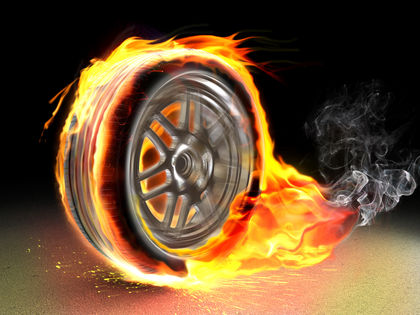TORQUE

Torque is the application of force where there is rotational motion. The most obvious example of torque in action is the operation of a crescent wrench loosening a lug nut, and a close second is a playground seesaw. But torque is also crucial to the operation of gyroscopes for navigation, and of various motors, both internal-combustion and electrical.
Force, which may be defined as anything that causes an object to move or stop moving, is the linchpin of the three laws of motion formulated by Sir Isaac Newton (1642-1727.) The first law states that an object at rest will remain at rest, and an object in motion will remain in motion, unless or until outside forces act upon it. The second law defines force as the product of mass multiplied by acceleration. According to the third law, when one object exerts a force on another, the second object exerts on the first a force equal in magnitude but opposite in direction.
One way to envision the third law is in terms of an active event—for instance, two balls striking one another. As a result of the impact, each flies backward. Given the fact that the force on each is equal, and that force is the product of mass and acceleration (this is usually rendered with the formula F = ma ), it is possible to make some predictions regarding the properties of mass and acceleration in this interchange. For instance, if the mass of one ball is relatively small compared to that of the other, its acceleration will be correspondingly greater, and it will thus be thrown backward faster.
On the other hand, the third law can be demonstrated when there is no apparent movement, as for instance, when a person is sitting on a chair, and the chair exerts an equal and opposite force upward. In such a situation, when all the forces acting on an object are in balance, that object is said to be in a state of equilibrium.
Physicists often discuss torque within the context of equilibrium, even though an object experiencing net torque is definitely not in equilibrium. In fact, torque provides a convenient means for testing and measuring the degree of rotational or circular acceleration experienced by an object, just as other means can be used to calculate the amount of linear acceleration. In equilibrium, the net sum of all forces acting on an object should be zero; thus in order to meet the standards of equilibrium, the sum of all torques on the object should also be zero.